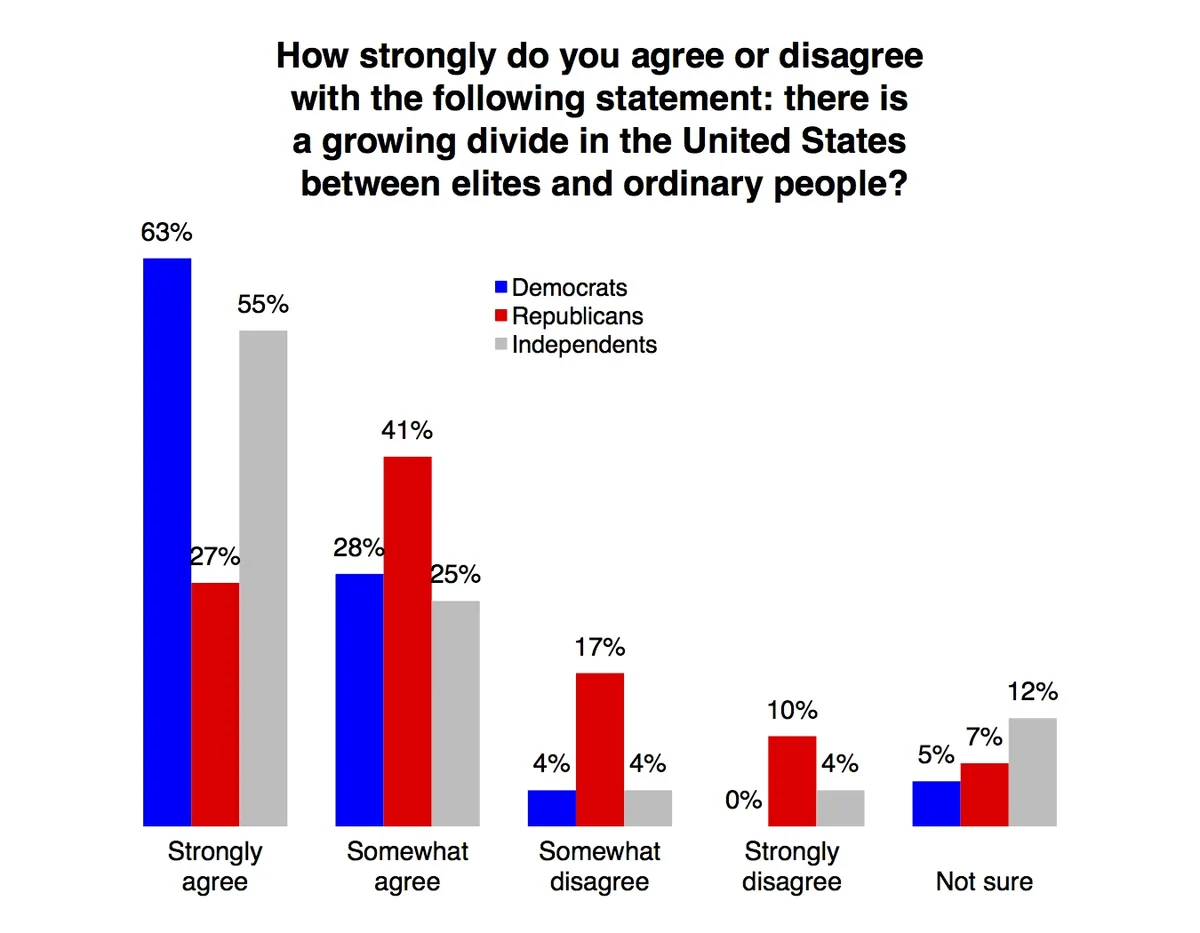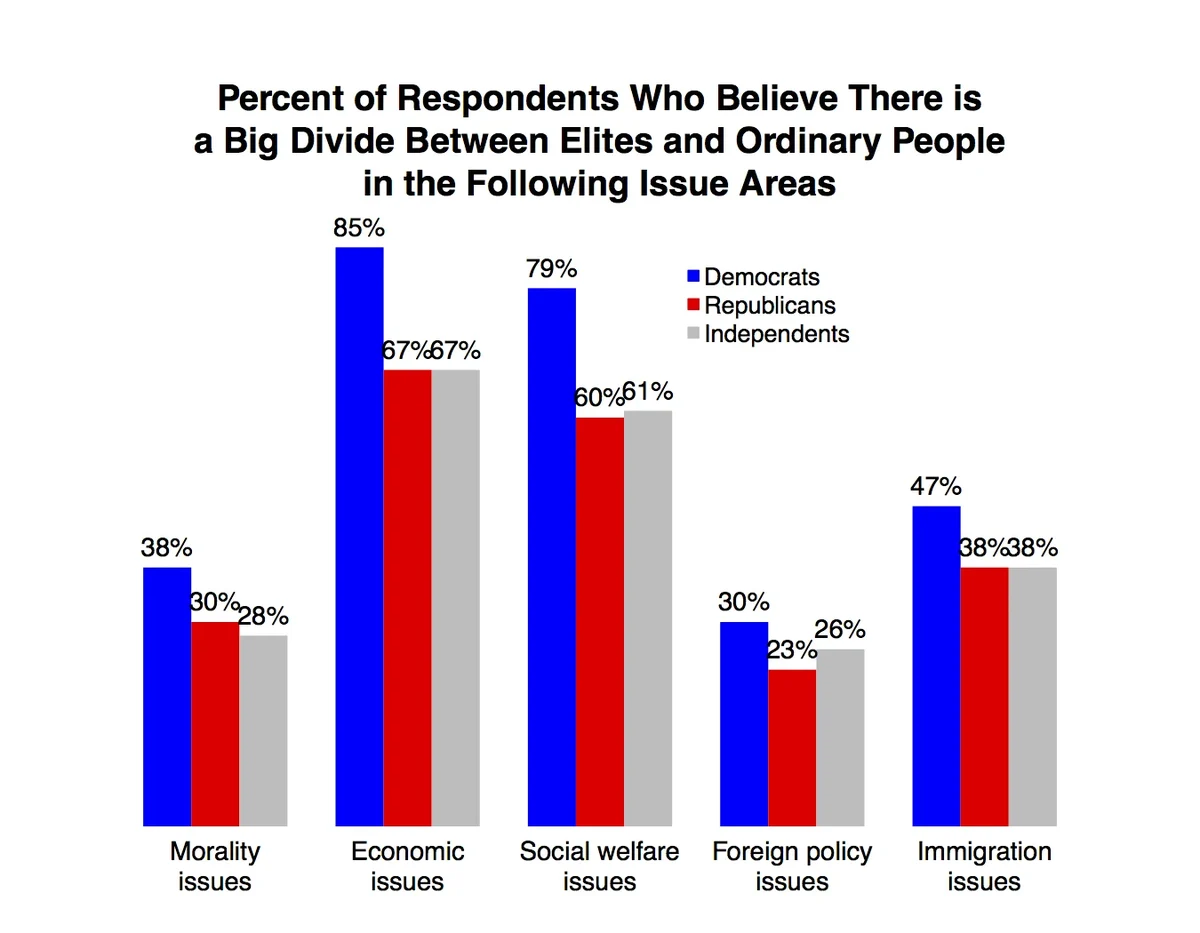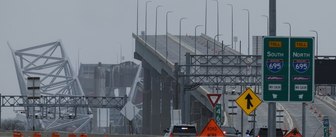In the contemporary U.S., one frequently hears politicians and pundits discussing a growing divergence between middle-class Americans and those at the top of American society. This basic narrative can be heard from liberal and conservative voices alike, though these groups surely differ in their understanding of what the divide is all about. In the left-wing version of the narrative, the divide is strictly about economics, with the privileged few being the one percent of Americans at the top of the country’s income distribution. In the narrative of conservative politicians like Sarah Palin, Newt Gingrich, and now Rick Santorum, the nature of the divide is more about ideology or culture – the privileged few are the “liberal elites” who disseminate their values through control of the country’s most vaunted institutions, including the media and the academy. Numerous pundits and political commentators have recently chimed in and offered their own interpretations of how or why the top of the American socioeconomic ladder is increasingly dissimilar from its base and midsection (see here, here, and here for just a few examples).
What do the “ordinary Americans” think? Do they concur with the views of the political and chattering classes that America is splitting apart so asymmetrically? On what political issues do they see this divide occurring? In the YouGov/Economist survey conducted on February 4-7, we asked respondents how strongly they agreed with the following statement: “there is a growing divide in the United States between elites and ordinary Americans.” The question was intentionally designed to be vague so as to allow respondents to call forth whatever understanding of the divide between elites and ordinary Americans they might have had in their minds.
Strikingly, a very large percentage of respondents agree with the proposition that there is a growing divide. 46% of respondents strongly agreed with the statement, and another 31% somewhat agreed. Only 12% either strongly or somewhat disagreed.
Given that references to the divide between elites and the masses have become commonplace among both Democratic and Republican politicians, one might expect both Democratic and Republican voters to overwhelmingly share the sentiment that a divide of some sort is growing. As it turns out, however, there are big differences in views among Democrats, Republicans, and independents concerning whether a growing divide exists. 63% of Democrats and 55% of independents strongly agree that a divide is growing, as opposed to only 27% of Republicans. (When Republicans who somewhat agree with the statement are added in, however, the number of Republicans who agree that there is a growing divide is well over fifty percent).

One might also expect that there would be large differences among partisans in terms of the policy areas in which they detect a divide between elites and the masses. After all, as I discussed in the first paragraph of this article, Democratic and Republican politicians are often referring to very different things when they talk about how the folks at the top are increasingly distinct from the rest of America. Given the cultural overtones of Republican rhetoric directed at the “liberal elites,” Republican voters might be more likely than Democrats to locate the division between elites and masses in hot-button social issues like immigration or gay marriage. Because of the left’s focus on income inequality, Democratic voters might be more likely to view economic issues as a locus of the growing divisions between elites and ordinary Americans.
In order to determine if Democrats and Republicans differ in terms of which policy issues are at the center of the divide, we also asked respondents whether the divide between elites and masses on a set of policy areas was big, small, or if there is no divide at all. In the table below, I report the percentage of partisans who answered that there is a big divide for each of these policy areas.

In something of a surprise, little difference exists in the responses to these questions across the partisan groups. Among all three party groups, economic and social welfare issues were far more likely to be considered as sources of a big divide between elites and ordinary people than the other three policy categories that were asked. But even more surprisingly, Republicans were less likely than Democrats to say that a big divide exists between elites and ordinary people across all issue areas, including morality issues (which were specified as including abortion and gay marriage) and immigration issues.
Two conclusions can be cautiously drawn from the results presented above. First, the perception of a growing divide between elites and ordinary people is very widely shared among Americans, but Republicans are much less likely to feel strongly about it than Democrats or independents. Why this is the case is unclear, but one possibility is that Republican voters are simply more leery of notions of class conflict among Americans than are Democrats and Republicans. Second, irrespective of their political views, Americans are in relative agreement concerning the policy areas over which a divide between elites and ordinary American exists. This does not mean that they understand the divide the same way, but they do at least share an understanding of where it is occurring.









